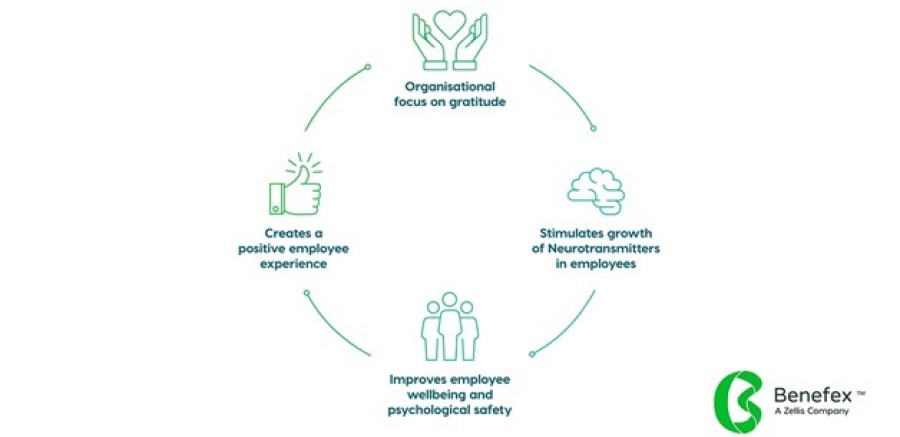The neuroscience of gratitude in the workplace

Native Americans have always had a deep tradition of routinely giving thanks. The Ottawa’s, who live in the northern regions of the Lower Peninsula of Michigan, have regular feast days and ghost suppers going back hundreds of years to show gratitude for the people and the harvest. In these indigenous groups, wealth is defined not by material goods, but the idea that the wealthy are those who give and share with others. Gratitude is espoused on a daily basis among these communities because they understand how important it is to the strength of their community.
In 2021, human nature hasn’t much changed. Finding ways to work closer together is part of our survival as a race. But it’s also shown to be an incredibly important part of building a successful business. But before we get to the impact on the workplace, let’s look quickly at exactly what happens to our bodies when we give or receive gratitude.
The neuroscience of being thanked
When we express gratitude for something or receive thanks, our brain releases dopamine and serotonin – two important neurotransmitters that regulate our emotions – which makes us feel good. By regularly feeling grateful and expressing thanks to others, we can help these neural pathways to strengthen and eventually automate. The more often a neural pathway is activated, the less effort it takes to stimulate the same pathway next time. Eventually, expressing gratitude becomes even stronger and more important to us.
The part of the brain that is responsible for all of our emotional experiences is called the limbic system. It’s made up of the thalamus, hypothalamus, amygdala, hippocampus and cingulate gyrus. Studies have shown that it’s the hippocampus and the amygdala (the main areas that regulate our memory and emotions), that light up when we feel grateful. So we can see that giving or receiving small gestures of thanks and kindness activates the hypothalamus and subsequently impacts all of our bodily functions that are controlled by it – including one of the most important areas of our overall wellbeing – sleep.
A number of studies looking at gratitude and appreciation have found that, when feeling grateful, people show a marked reduction in levels of cortisol – the stress hormone. Research has shown that grateful people often have better cardiac functioning and are more resilient to stress. This now starts to illustrate how important gratitude at work can be to things like employee performance too.

We can see in this image exactly how neuroscience plays a part in creating the right environment for employees to blossom. Expressing gratitude at work becomes a proactive driver towards building close bonds, and fostering psychological safety and togetherness with our colleagues.
Gratitude at work
Studies have shown that when students express gratitude to parents, teachers, or coaches, they feel closer and more connected to them. Expressing gratitude to the people we work with strengthens our social bonds. By doing so, we increase the sense of community wellbeing, which actually encourages us to take on bigger challenges in our lives and at work.
This becomes hugely important for one of the most vital areas of the employee experience: psychological safety. You’re probably familiar with Google’s large experiment that looked at what made a successful, high-performing team. Project Aristotle found that psychological safety – more than anything else – was critical to making a team work.
When employees practice gratitude and thanks at work, they become more likely to take on new assignments, more willing to go the extra mile and more likely to work as part of a well-functioning team. Research shows us that gratitude at work leads to less exhaustion, higher job satisfaction, fewer absences due to illness and generally more proactive and positive behaviours. So, giving and receiving recognition within in a team builds those important social bonds, and increases the connectedness that is so important to team success.
Recognition for personal and organisational success
The neuroscience and psychological research into giving thanks and expressing gratitude is pretty significant. So much so, that many professionals will prescribe practising gratitude to people to help them deal with their emotional wellbeing.
But the evidence is also clear; recognition isn’t just part of a successful workplace wellbeing strategy, it’s also part of organisational success. I really believe that an organisation cannot be successful unless its people get the recognition they deserve on a regular basis. Employee recognition is not just a nice to have, it’s a fundamental element of a well-functioning business.
The author is Gethin Nadin, director, employee wellbeing at Benefex.
This article is provided by Benefex.
Supplied by REBA Associate Member, Benifex
The home of award-winning employee benefits, reward, recognition, & communications.







